
- Home
- About Us
- What We Do
- Partners
- ICAR-Indian Agricultural Research Institute, New Delhi
- ICAR-Indian Agricultural Statistics Research Institute, New Delhi (IASRI)
- ICAR-National Rice Research Institute, Cuttack (NRRI)
- ICAR-Indian Institute of Wheat and Barley Research, Karnal (IIWBR)
- ICAR-Central Institute of Cotton Research, Nagpur (CICR)
- ICAR-Indian Institute of Vegetable Research, Varanasi (IIVR)
- ICAR-National Research Centre on Banana (NRCB)
- ICAR-Indian Institute of Soil Science, Bhopal (IISS)
- ICAR- National Bureau of Soil Survey and Land Use Planning, Nagpur (NBSS&LUP)
- ICAR-Indian Institute of Water Management, Bhubaneshwar (IIWM)
- ICAR-Central Institute of Agricultural Engineering, Bhopal (CIAE)
- ICAR- Central Institute of Post-Harvest Engineering and Technology, Ludhiana (CIPHET)
- ICAR-National Dairy Research Institute, Karnal (NDRI)
- ICAR-Central Institute of Fisheries Education, Mumbai (CIFE)
- ICAR- Central Inland Fishery Research Institute, Barrakpore (CIFRI)
- ICAR- Central Institute of Fresh Aquaculture, Bhubaneswar (CIFA)
- Tools / Web Services
- Publications
- Gallery
- Committee
- Contact Us
Achievements
ICAR-Central Institute for Cotton Research
Development of AI enabled wireless smart trap for monitoring pink bollworm
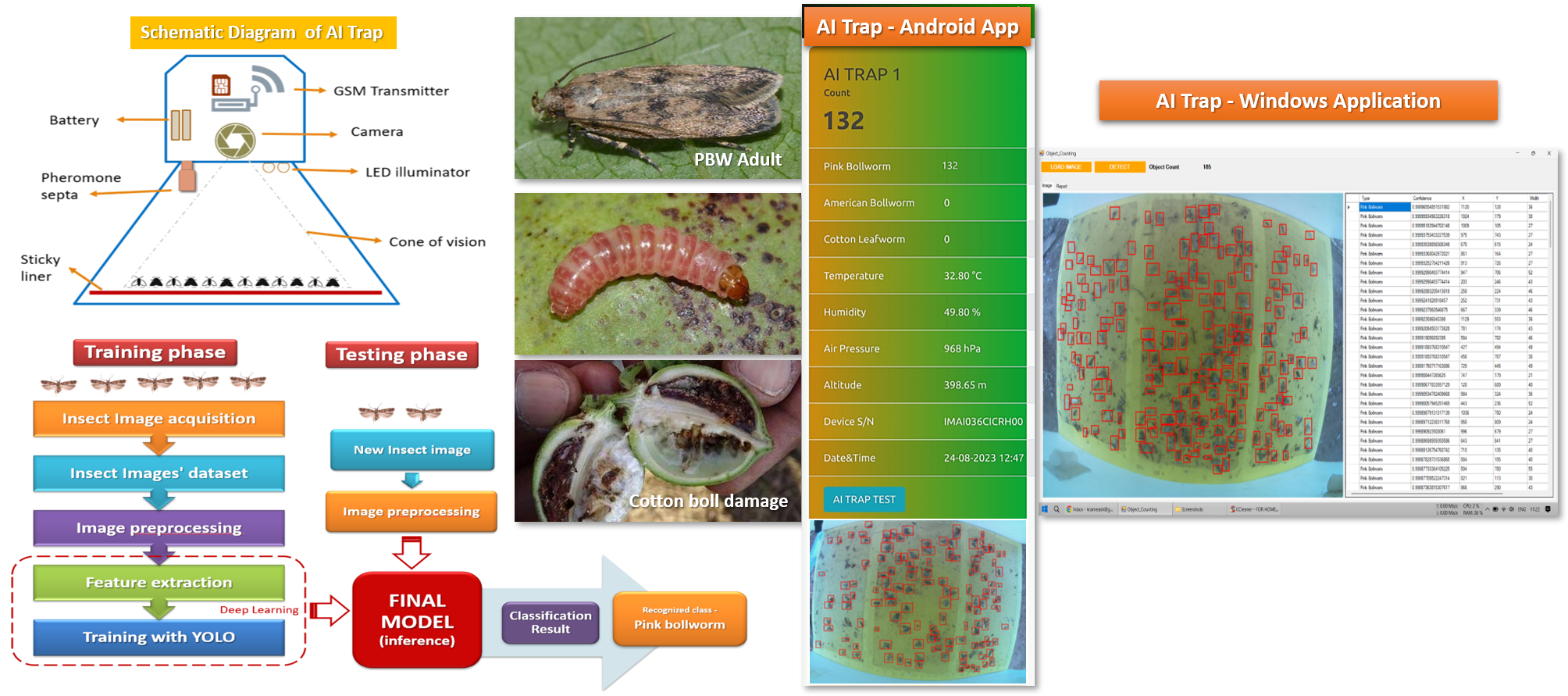
Image based identification of cotton diseases: Algorithms of image processing and identifying diseases during crop season


Nitrogen Sufficiency Index based management zones –Variable Rate Technology for fertilizer-N
Precision agriculture aims at location specific application of inputs with the right intensity and at the right time. Therefore, precision agriculture does not treat the entire farm/field as a homogenous unit; rather it divides the field/farm into zones so that variable rate inputs can be delivered as per the requirement of individual zones. Remote sensing is a promising method of assessing in-season N status with the adoption of reliable low-cost unmanned aerial vehicles (UAV), high-resolution multi-spectral sensors and availability of advanced image processing software for precision application of fertilizer-N in cotton based on Variable Rate Technology (VRT). Through multispectral imaging, an attempt was made to develop vegetation indices based algorithm and management zone maps for topdressing nitrogen at variable rates.

Prototype of IoT based and AI aided pest forewarning system
AI based smart Pheromone trap was developed at ICAR-CICR for automated real-time monitoring of pink bollworm (PBW) in cotton. The system consists of a single board computer; camera module; weather sensor and a Wi-Fi/ GSM transmitter. The standalone system is powered by a solar panel with a Li-ion rechargeable battery. The AI trap records insect catches as images; the inbuilt machine learning algorithm counts the number of insects trapped and transmits the data to a remote server at hourly intervals along with weather parameters (temperature, relative humidity, atmospheric pressure and altitude). YOLO-based Machine Learning algorithm detects the trapped adults of pink bollworm with 91.4% detection accuracy. An android app and a Windows application are developed to receive, store and retrieve the data (along with weather parameters) from the AI smart trap to a mobile device and a personal computer. By investigating the real-time trap catch with corresponding weather data, the pest dynamics over a wider area could be comprehended in a better way and subsequently it helps to establish a reliable pest forewarning system and better pest management practices in cotton.
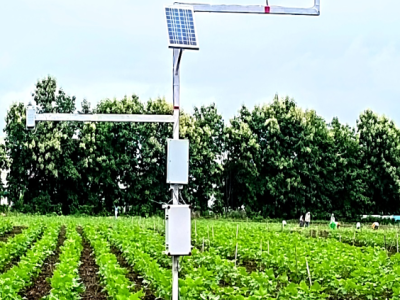
Sensor-based precision irrigation
Sensor- based drip irrigation resulted in water saving and yield enhancement compared to the ET-based drip irrigation. The yield enhancement with sensor based irrigation was to the tune of 6 q/ha over conventional irrigation and 4 q/ha over ET-based irrigation besides saving of irrigation water. Water requirement of ICAR-CICR-23 Bt was 78.3 ha-cm under conventional method while it was 51 ha-cm with drip (1.0 ET) and 45.3 ha-cm under sensor-based drip irrigation. Thus water saving due to sensor-based drip irrigation was 5.7 lakh litres over ET-based irrigation.
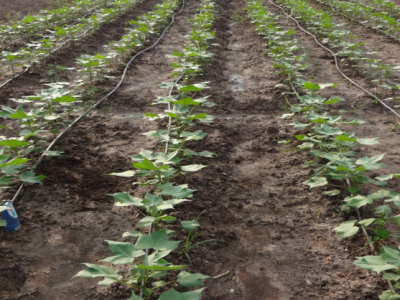
Assessment of UAV Spray distribution
Spraying of agro-chemicals like pesticides, plant growth regulators and nutrient solutions using Unmanned Aerial Vehicle (UAV) system also known as DRONE, offers an efficient, quick and economical spraying option vis-à-vis conventional spraying methods. An attempt was made to evaluate the spray distribution and bio efficacy of insecticide (Dinotefuran 20 SG @ 150 g/ha) applied through UAV against sucking pests on cotton during kharif 2022 at ICAR-CICR Regional Station, Coimbatore. The UAV flight altitude of 2 m and speed of 2.5 m/s were kept at constant rate, while the spray fluid volumes were applied @10 L /ac, 15 L/ac, 20 L/ac and 25 L/ac. The results indicated that spray volume of 20 L/ac and 25 L/ac recorded significantly uniform spray fluid distribution in the top, middle and bottom canopy of cotton plant with superior bio-efficacy against the sucking pests.
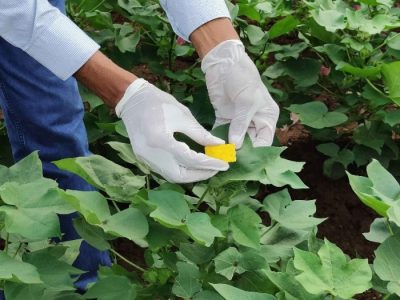
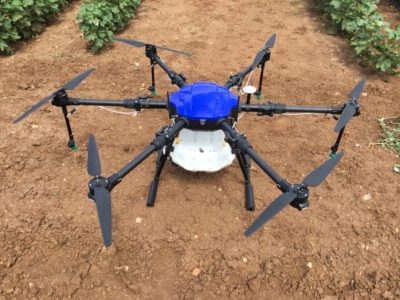
Demonstration of Nutrient Expert(R) for Cotton @ 53 sites
